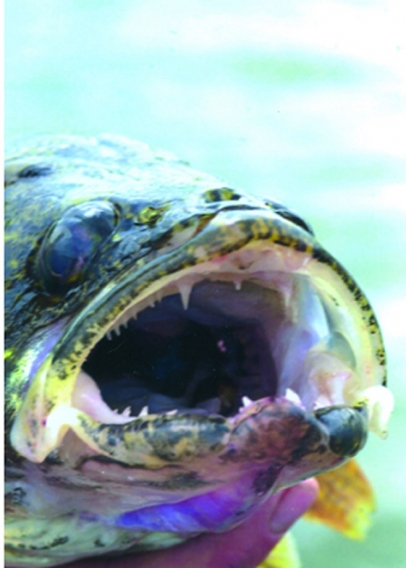An Indigenous Freshwater Delicacy
It’s approaching the end of September, 88° Fahrenheit, with considerable humidity. What do you do when you’re fishing for a creature that’s known as a golden prize of the Cape? The answer depends on the lake you’re fishing and the ecosystem in place. Many walleye anglers would be searching for baitfish off deep-water ledges. Most anglers on the water that day in late September where I was were, in fact, doing precisely that.
Luckily for me, I had an experienced walleye angler with me on the water that day, fishing guide Melvin Newton, and he did precisely the opposite. We spent the morning working shallow water crankbaits on the wind blown shoreline, in approximately four feet of water. The looks we got from other anglers were priceless, and somewhat comical. But ratherthan acknowledge them, we spent our day bringing in a ton of walleye (metaphorically speaking, of course).
After lunch, Melvin and I headed back out. Walleyes never did leave the shallows that day. We continued to pull out fish until winds pushed us and everyone else off the water.
Walleye is a freshwater fish native to most of Canada and the northern United States. They grow to about 30 inches in length and weigh up to 15 pounds. Olive and gold in color, a walleye’s mouth is armed with many sharp teeth. The fish is named for its concreteappearing eyes, which is caused by a reflective layer of pigment that helps it see and feed at night and in murky water.
Many cooks consider walleye to have the best tasting flesh of any freshwater (or saltwater) fish. Because of its nocturnal feeding habits, walleyes are most easily caught at night using live minnows or lures that mimic small fish.
Cape Cod is definitely walleye country. For some people, walleye fishing on the Cape is a social occasion for gathering at a lakeside cabin with friends and relatives. Others pursue walleye from sunrise to late in the day searching for a trophy—or a mouth-watering lunch of fillets and fried potatoes on a Cape Cod beach.
You can find great action from these tasty fishin a variety of settings, from lakes to shallow reservoirs to clear rivers. Prime bodies of water on the Cape for walleye fishing include the 700- acre Mashpee-Wakeby Pond in Sandwich and Mashpee, and the ponds in Nickerson State Park in Brewster. Also check out John’s Pond off Route 151 in Mashpee, Peter’s Pond in Sandwich, Scargo Lake off Route 6A in Dennis, Goose Pond along Old Queen Anne
Road in Chatham, Sheep Pond off Route 124 in Brewster, Great Pond off Route 6 in Truro and Long Pond along Madaket Road on Nantucket. Massachusetts freshwater fishing requires a license, which can be purchased at town halls.
Some anglers might be skeptical when hearing the words “shallow” and “walleye” used together. At one time, I certainly was.Walleyes are deep-water fish, right? After learning how to catch walleyes from shallow water, however, I became a believer. Many shallow-water walleyes live their lives untouched by anglers. Fishing magazines don’t focus on shallow walleye much and many anglers still believe long-enduring myths about walleyes always preferring deep water.
As a species, walleyes are highly adaptable andmultiply so rapidly they tend to take over some waters, preying upon resident fish. Good walleye habitat requires an ample supply of baitfish: 2- to 5-inch fingerlings, including shad, yellow perch and crayfish.
In many places, the walleye is considered by some to be a creature of the depths, hovering in dark waters far below anglerson the surface. The species often, but not always, avoids sunshine and calm water, preferring winds (3-10 mph), small surface waves and depths of 20 to 60 feet. It’s not unheard of to catch walleyes in 90 feet of water. Still…
Walleyes do oftentimes roam shallow waters because, simply stated, such waters are loaded with food. Some walleyes prefer to stay in the shallows year-round. Others move shallow along with the forage. Both types of fish are accessible, but nomadic walleyes may stay shallow for shorter periods.
HOW TO FISH THE SHALLOWS
When fishing for shallow-water walleyes on the Cape, remember the basics. Noise should alwaysbe kept to a minimum. If you’re fishing from an aluminum boat, carpet the floor. Don’t scrape bait containers or coolers on the deck. Don’t slam coolercovers or livewell hatches. Take fish from the net softly so they don’t flop on deck. Release fish quietly.
When approaching a prime fishing area, cut the outboard. Drift toward the shallows, or use an electric trolling motor. Be careful where your boat shadows fall. Never drift over a spot until you’ve finished fishing it.
When using an electric trolling motor, lower itonly enough so it doesn’t come out of the water in waves. This eliminates slashing and cutting weeds. Use only enough power to maneuver, and only turn the motor on when absolutely necessary. I prefer moving slowly against the wind, which makes precise casting easier.
Original recipes for this indigenous, incredibly delicious fish include my favorite for Pan-Fried Walleye. For it you need
approximately one pound walleye fillets, two eggs, 1/4 cup milk, two sleeves Club Crackers, salt and pepper to taste and olive oil.
Pat fish dry with a paper towel, then combine eggs with milk and beat. Roll crackers in a freezer bag using a rolling pin. Dip fish in milk-egg mixture and add crackers. Then put olive oil in a frying pan, place fish in it, and cook until golden brown. A simple way to prepare fillets but wonderfully good-tasting.
For Grilled Pecan-Encrusted Walleye you need four walleye fillets, 1/4 cup chopped pecans, one tablespoon melted butter, one teaspoon finely chopped onion, one teaspoon orange juice and seasoning.
Combine butter, onion, juice and half the pecans in a small bowl and mix well, then preheat grill. Take a 12-inch-square piece of aluminum foil and cut 2-inch slits in it. Spray with a nonstick spray and place on grill. Put fillets on foil, sprinkle with seasoning and grill for about ten minutes. Just before the fish starts to flake, top with the pecan-butter-orange juice mixture. Remove from heat and sprinkle on remaining pecan pieces before serving.
A tasty recipe for Baked Walleye Fillets calls for enough fillets to serve the number of individuals you intend to feed, 1/3 cup chopped green onion, one cup sliced mushrooms, one teaspoon salt, 1/4 teaspoon ground white pepper, one teaspoon crumbled leaf marjoram, two tablespoons dry white wine, two teaspoons lemon juice, 1/4 cup shredded Monterey Jack cheese, 1/4 cup fresh bread crumbs, one stick melted butter and two tablespoons
chopped fresh parsley.
With these ingredients in hand, butter a baking dish, big enough so that the fillets slightly overlap, and preheat oven to
400° F. Spread green onions and mushrooms over the bottom of dish and place fish on top. Season with salt, pepper and marjoram; then sprinkle with wine, lemon juice, cheese and bread crumbs. Slowly pour melted butter over breadcrumbs. Bake for four minutes, then loosely place aluminum foil over fillets but do not seal edges. Bake an additional seven minutes or until fish flakes easily and your stomach tells you it’s time to dig in.
Beer Battered Walleye calls for fillets, pancake mix and beer. Add mix and beer together to make a thick batter. Dip fillets in batter, and then fry in hot oil until they turn golden brown. Drain on paper towels. If you like, season with salt and pepper.
For Grilled Walleye with Horseradish Sauce you need two pounds of fillets, one cup Lawry’s Herb & Garlic with Lemon Juice Marinade, one teaspoon seasoned salt, one teaspoon lemon pepper, 1/4 cup butter, 2+ tablespoons horseradish and two tablespoons fresh minced dill.
In a plastic container, place fillets in the marinade. Keep in refrigerator for an hour; then remove fish from marinade, drain, and sprinkle with lemon pepper and seasoned salt.
After spraying grill with non-stick spray, cook fillets on barbecue grill or in broiler 3 to 5 minutes per side, or until fish flakes. In a saucepan, melt butter. Remove from heat, stir in horseradish and dill, then spoon mixture on fillets. For people who love the spicy taste of horseradish, this recipe can’t be beat.
Walleye is one of the best tasting fish to be found anywhere, on or off Cape Cod. Believe it or not, I first learned how wonderfully tasting walleye is many years ago at a restaurant in Wall, South Dakota. But, nothing beats a shore lunch of fresh walleye panfried over an open fire. It’s one Cape Cod tradition you really should sample. This is a local, indigenous super-fresh food whose taste is sure to please even finicky eaters.
Mary Syrett is a native of Plymouth, who spent her summers on the Cape as a teen. A graduate of Boston College, Mary is currently living in the Research Triangle Park area of North Carolina with her spouse who is a visiting professor.





